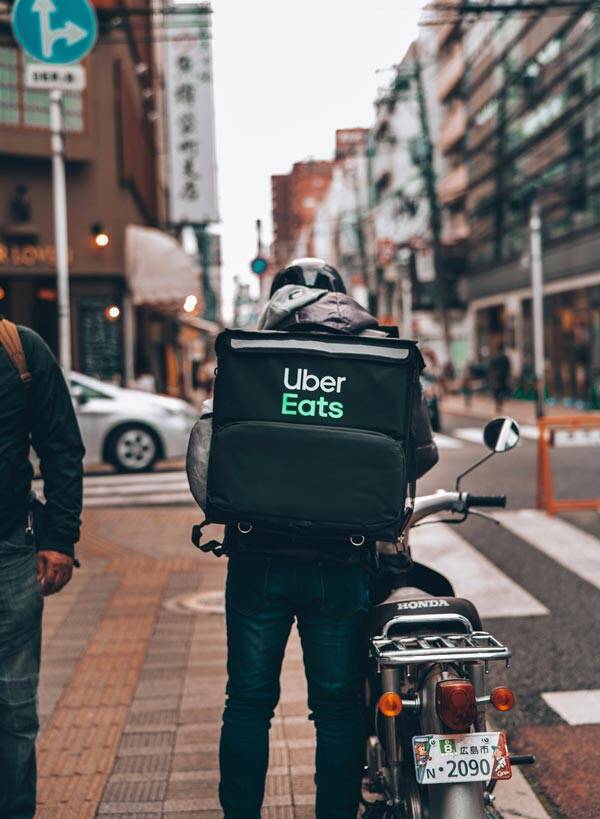Food delivery after COVID-19
As the food delivery market keeps on growing, the question remains: What will the new normal look like? When COVID-19 restrictions get relaxed, will they leave behind a permanent change in consumer behaviour? According to a recent Bank of America survey, consumers are using restaurants more than they were in April though many are still cautious about dining out as 32 percent said they won’t be comfortable until 2021. As a consequence a lot of restaurants are forced to continue to rethink their business strategies and chances are they will have to rely on delivery to survive financially. A CGA study in the UK shows that consumers who ordered delivery for the first time during lockdown, or consumers that order more often than usual, 60 percent said they would continue their frequency of ordering delivery from restaurants.

Big players in food delivery
But it's not just UberEats that is transitioning and expanding during the pandemic. Back in April the Dutch Takeaway.com and the British JustEat decided to merge. And their expansion didn’t stop with just the merge. The Dutch-British meal delivery company just made headway in the United States, by taking over GrubHub, the largest food delivery company in the States. According to Jitse Groen, chief executive of Just Eat Takeaway, the acquisition creates the world's largest meal delivery company outside of China. Together the companies will account for more than 70 million active customers worldwide.

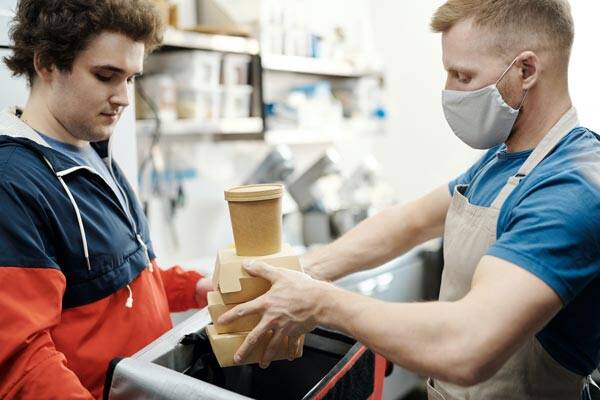
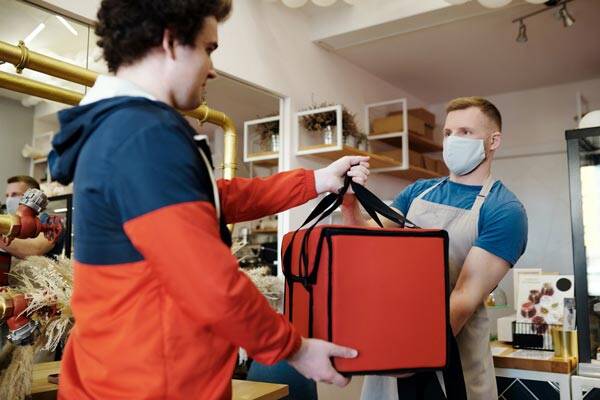
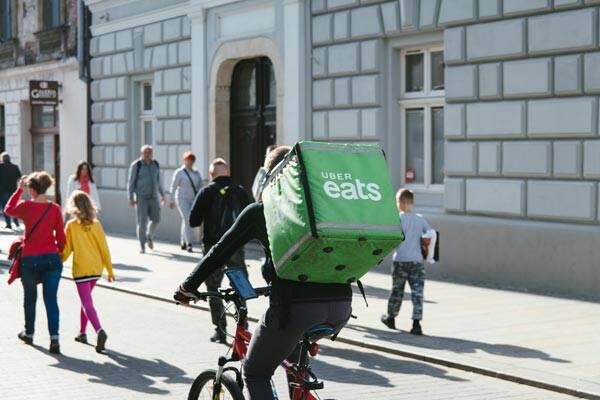
From moving people to moving food
Since UberEats launched in 2014 in Los Angeles, the platform has become one of the biggest players in the food delivery industry worldwide. While the ride-hailing part of the Uber enterprise is suffering during the global pandemic, UberEats is growing continuously. In fact the pandemic has caused the delivery platform to thrive. Recent reports suggest that 24 million new users downloaded the app during Q2 2020 alone. As the pandemic continues Uber seems to be transitioning by expanding its food delivery options. The company acquired Postmates for $2.65 billion, and recently launched an on-demand grocery delivery service in Latin America and Canada as part of its acquisition of Cornershop, an app that allows consumers to buy their groceries online from different grocers and specialty shops.


“Social distancing and working from home changed people's daily routines”
Changing routines
These new delivery platforms that emerged during the 2010s allow consumers to compare menus and order different meals from a selection of restaurants through one single website or app. Platform-to-consumer delivery companies don't just provide convenience for consumers, they also take on the logistics for restaurants. Which has caused high-end establishments that traditionally did not deliver, to join the delivery market.
As the delivery market was expected to grow due to changing demographics and busy lifestyles, the unexpected global pandemic has given the industry an even bigger push to expand. Due to the consequences of COVID-19, restaurants closed their doors for customers. After re-opening, social distancing and working from home changed people's daily routines and the way they consume. All these developments have led to a bigger demand in food delivery.
Up until a couple of years ago the most common form of food delivery was the traditional model where consumers would place their order at their local pizza parlor after which their order would be brought to the door by the restaurant's own delivery staff. But since a couple of years platform-to-consumer delivery has increased in popularity.
Lisa Appels Xiao-Er Kong
The first ever online food order was a pizza from Pizza Hut back in 1994. Since the nineties the online food delivery market increased a lot and has become a billion dollar business.

Worldwide lockdowns ACCELeRaTE growth for food delivery platforms
Food delivery thriving in times of crisis
3 min
TRENDWATCH
FOOD DELIVERY THRIVING IN TIMES OF CRISIS
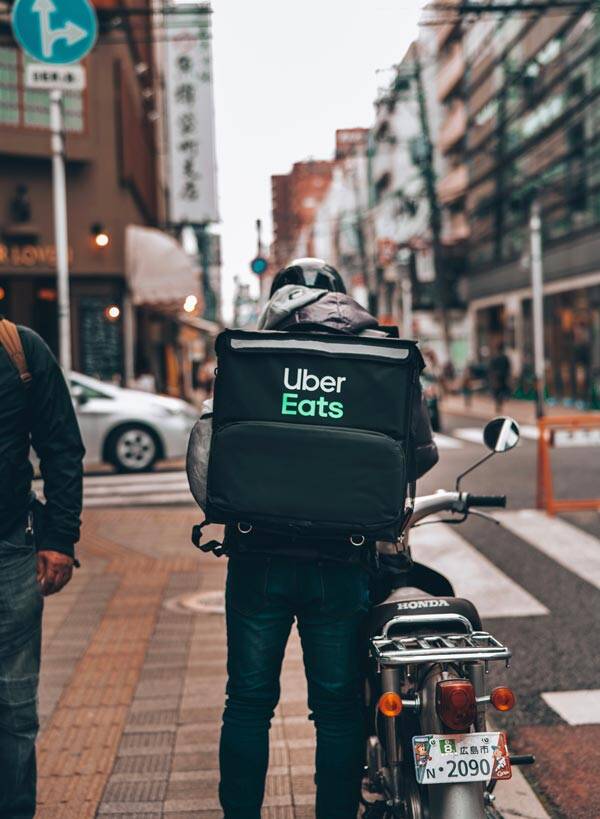

sources
www.statista.com/outlook/374/100/online-food-delivery/worldwide
www.theverge.com/2020/8/6/21357745/uber-q2-2020-earnings-ride-eats-loss-coronavirus
https://www.statista.com/outlook/374/100/online-food-delivery/worldwide
www.cga.co.uk/2020/04/17/delivery-in-need-of-a-new-direction/

Food delivery after COVID-19
As the food delivery market keeps on growing, the question remains: What will the new normal look like? When COVID-19 restrictions get relaxed, will they leave behind a permanent change in consumer behaviour? According to a recent Bank of America survey, consumers are using restaurants more than they were in April though many are still cautious about dining out as 32 percent said they won’t be comfortable until 2021. As a consequence a lot of restaurants are forced to continue to rethink their business strategies and chances are they will have to rely on delivery to survive financially. A CGA study in the UK shows that consumers who ordered delivery for the first time during lockdown, or consumers that order more often than usual, 60 percent said they would continue their frequency of ordering delivery from restaurants.

Big players in food delivery
But it's not just UberEats that is transitioning and expanding during the pandemic. Back in April the Dutch Takeaway.com and the British JustEat decided to merge. And their expansion didn’t stop with just the merge. The Dutch-British meal delivery company just made headway in the United States, by taking over GrubHub, the largest food delivery company in the States. According to Jitse Groen, chief executive of Just Eat Takeaway, the acquisition creates the world's largest meal delivery company outside of China. Together the companies will account for more than 70 million active customers worldwide.


From moving people to moving food
Since UberEats launched in 2014 in Los Angeles, the platform has become one of the biggest players in the food delivery industry worldwide. While the ride-hailing part of the Uber enterprise is suffering during the global pandemic, UberEats is growing continuously. In fact the pandemic has caused the delivery platform to thrive. Recent reports suggest that 24 million new users downloaded the app during Q2 2020 alone. As the pandemic continues Uber seems to be transitioning by expanding its food delivery options. The company acquired Postmates for $2.65 billion, and recently launched an on-demand grocery delivery service in Latin America and Canada as part of its acquisition of Cornershop, an app that allows consumers to buy their groceries online from different grocers and specialty shops.


“Social distancing and working from home changed people's daily routines”
Changing routines
These new delivery platforms that emerged during the 2010s allow consumers to compare menus and order different meals from a selection of restaurants through one single website or app. Platform-to-consumer delivery companies don't just provide convenience for consumers, they also take on the logistics for restaurants. Which has caused high-end establishments that traditionally did not deliver, to join the delivery market.
As the delivery market was expected to grow due to changing demographics and busy lifestyles, the unexpected global pandemic has given the industry an even bigger push to expand. Due to the consequences of COVID-19, restaurants closed their doors for customers. After re-opening, social distancing and working from home changed people's daily routines and the way they consume. All these developments have led to a bigger demand in food delivery.
Up until a couple of years ago the most common form of food delivery was the traditional model where consumers would place their order at their local pizza parlor after which their order would be brought to the door by the restaurant's own delivery staff. But since a couple of years platform-to-consumer delivery has increased in popularity.
Lisa Appels Xiao-Er Kong
The first ever online food order was a pizza from Pizza Hut back in 1994. Since the nineties the online food delivery market increased a lot and has become a billion dollar business.

on their way to a trillion dollar industry in 2030
Food delivery thriving in times of crisis
3 min
